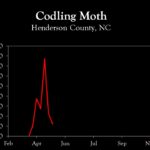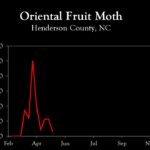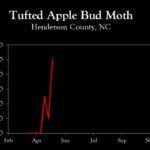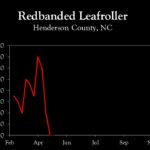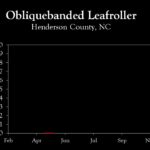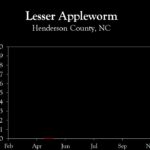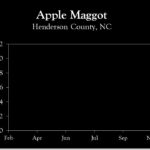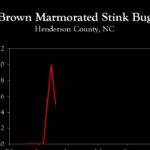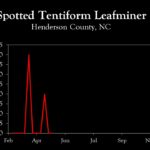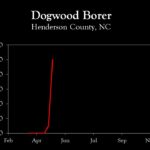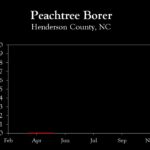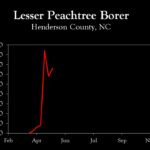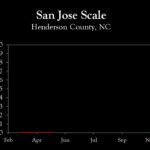WNC Orchard Insect Pest Populations – May 18, 2021
go.ncsu.edu/readext?797819
en Español / em Português
El inglés es el idioma de control de esta página. En la medida en que haya algún conflicto entre la traducción al inglés y la traducción, el inglés prevalece.
Al hacer clic en el enlace de traducción se activa un servicio de traducción gratuito para convertir la página al español. Al igual que con cualquier traducción por Internet, la conversión no es sensible al contexto y puede que no traduzca el texto en su significado original. NC State Extension no garantiza la exactitud del texto traducido. Por favor, tenga en cuenta que algunas aplicaciones y/o servicios pueden no funcionar como se espera cuando se traducen.
Português
Inglês é o idioma de controle desta página. Na medida que haja algum conflito entre o texto original em Inglês e a tradução, o Inglês prevalece.
Ao clicar no link de tradução, um serviço gratuito de tradução será ativado para converter a página para o Português. Como em qualquer tradução pela internet, a conversão não é sensivel ao contexto e pode não ocorrer a tradução para o significado orginal. O serviço de Extensão da Carolina do Norte (NC State Extension) não garante a exatidão do texto traduzido. Por favor, observe que algumas funções ou serviços podem não funcionar como esperado após a tradução.
English
English is the controlling language of this page. To the extent there is any conflict between the English text and the translation, English controls.
Clicking on the translation link activates a free translation service to convert the page to Spanish. As with any Internet translation, the conversion is not context-sensitive and may not translate the text to its original meaning. NC State Extension does not guarantee the accuracy of the translated text. Please note that some applications and/or services may not function as expected when translated.
Collapse ▲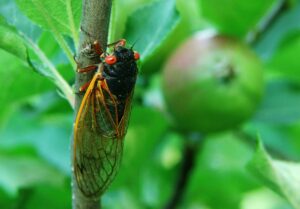 May 18, 2021
May 18, 2021
Codling moth remains the primary concern across the region, with degree-day accumulations since biofix ranging from about 300 DD in Henderson County to about 520 in the Cleveland/Lincoln County area. As highlighted in last week’s update, insecticide recommendations vary depending on how an orchard is being managed – i.e., a full crop versus one that is questionable as to whether or not to manage.
In higher elevations (Henderson, Haywood, Wilkes) being managed as a full crop, insecticidal control of codling moth is recommended an upcoming spray. In situations with a low codling moth population and which have not yet been sprayed for codling moth, an application should be made at about 350 DD, which is later this week in these locations. In lower elevations where DD accumulations are about 520, it should be remembered that an application between 500 and 650 DD will coincide the optimum timing for control of tufted apple bud moth. While first generation codling moth can remain a concern up to about 900 DD, in most situations insecticides are not needed beyond 600 and 650 DD.
In orchards with a low crop load that do not justify a normal spray program, it would be wise to make a single insecticide application between 500 and 650 DD to target both codling moth and TABM.
Brood X of 17-year Cicada: There have been numerous stories in the press about emergence of Brood X of the 17-year cicada. Within our region, this brood is expected to be restricted to northeast Georgia and far western North Carolina in Cherokee County, and should not be a concern for growers in other areas. Female cicadas lay eggs with a sharp ovipositor in the limbs of trees, and in large numbers they can do considerable damage to fruit trees. Most pyrethroids and neonicotinoids will control cicadas, but frequency of application will vary with the intensity of populations.
Learn more about southeastern apple insect pests at the Apple Insect Management page.
2021 Average Weekly Trap Captures
| HENDERSON COUNTY | |||
| Insects per trap | |||
| May 3 | May 10 | May 17 | |
| Codling moth | 15.5 | 4.5 | 2.5 |
| Oriental fruit moth | 11.5 | 11.5 | 3.0 |
| Tufted apple bud moth | 5.0 | 2.0 | 10.0 |
| Redbanded leafroller | 4.0 | 0.0 | 0.0 |
| Obliquebanded leafroller | 0.0 | 0.0 | 0.0 |
| Lesser appleworm | 0.0 | 0.0 | 0.0 |
| Apple maggot (abandoned and research orchards) | – | – | – |
| Brown marmorated stink bug (commercial) | – | – | 1.0 |
| Brown marmorated stink bug (unsprayed) | 0.5 | 1.0 | 0.5 |
| Spotted tentiform leafminer | 2.0 | 0.0 | 0.0 |
| Dogwood borer | 0.0 | 1.0 | 10.0 |
| Peachtree borer | 0.0 | 0.0 | 0.0 |
| Lesser peachtree borer | 42.0 | 29.0 | 33.0 |
| San Jose scale | 0.0 | 0.0 | 0.0 |
*Note that these averages illustrate only the timing of insect emergence and fluctuations in populations, and are not representative of population levels in any given orchard. The only way to have an accurate assessment of an individual orchard’s populations is to set up traps in that orchard.
2021 Accumulated Degree Days
| HENDERSON COUNTY | ||||
| May 3 | May 10 | May 17 | ||
| Codling moth (Biofix: April 10) |
177 | 243 | 298 | |
| Oriental fruit moth (Biofix: March 27) |
372 | 467 | 550 | |
| Tufted apple bud moth (Biofix: April 30) |
32 | 108 | 191 | |
2021 Pest Trends (click to enlarge)
Visit WNC Orchard Insect Populations for archived posts.
Additional Resources
- Apple Insect Management Overview
- How to Monitor Apple Insect Pests (IPM)
- Brown Marmorated Stink Bug in North Carolina
- Integrated Orchard Management Guide for Commercial Apples in the Southeast
- Walgenbach Entomology Lab



